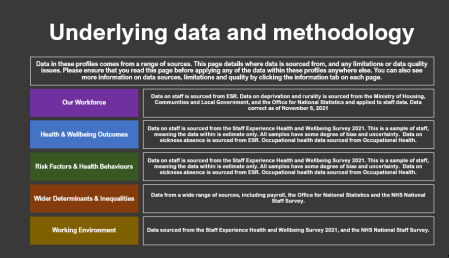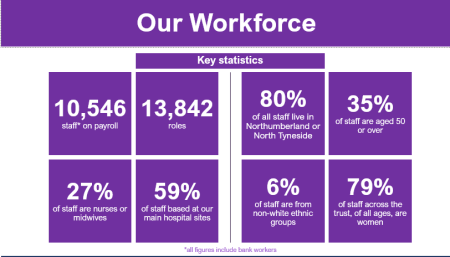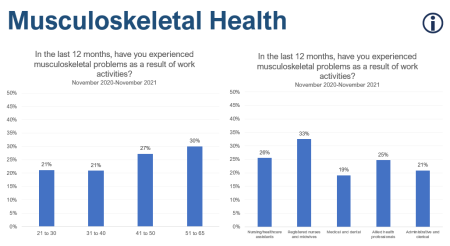Background
Northumbria Healthcare is working at the heart of our local communities to offer the very best in healthcare.
Our 12,000 staff provide a wide range of health and care services to more than 500,000 people living across Northumberland and North Tyneside. We’re also one of only a few NHS trusts to have been awarded ‘outstanding’ twice by national regulator, the CQC.
The focus of everything we do is providing the best possible care for our patients and service users, whether that’s in their own home or at one of our 10 local hospitals and healthcare facilities. We also provide services to people in some of the most urban and rural parts of England covering a huge area of more than 2,500 square miles.
With our staff doing such a great job of looking after so many people every single day, it’s important that we do everything we can to respond to their needs and look after them too.
In the same way as we would for our patients, we need to understand whether certain groups of our staff are more likely to experience poorer health outcomes. This includes understanding and trying to address any inequalities. Our new staff health and wellbeing interactive data tool helps us do this - it’s the latest in a long line of innovations to help us best support everyone who works for us.
Workforce Health Needs Assessment (HNA)
To better understand our staff, our team collected data from a range of sources:
- Staff experience survey – 3500 responses (sample of trust staff)
- 2021 National NHS survey – 897 responses (sample of trust staff)
- ESR – 10,500 people on ESR
- National ONS data - population information for the local areas surrounding our trust.
Collecting all of this data has helped us to assess the health of our workforce.
The overall aim is to improve our understanding of our workforce and the needs that exist. We can then plan interventions to meet staff needs, prioritise areas for development, to improve workforce health and reduce health inequalities.

Workforce health and wellbeing
The HNA process has provided us with a more in-depth profile of the health and wellbeing of staff, drawing on a range of data sources and information including demographics, health and wellbeing outcomes, risk factors, wider influences on health and employment.
Using this data, our team has created a new interactive tool which allows us to review a broad range of information about our workforce. It lets us see areas of potential inequality, explore evidence of unmet needs and guides our focus to inform the areas of work that need prioritising to improve staff health.

Using the tool
Within our trust, we can now search a range of factors by staff profile to explore the wider determinants of health and understand what we can do to help.
Our first two projects using the interactive data tool have looked at how Musculoskeletal (MSK) conditions and financial wellbeing were impacting particular groups of staff.
On MSK the team are now focused on:
- Increasing awareness of the support available to staff such as fast track physio assessments and health coaches.
- Using data to target those who are at higher risk of MSK issues which include healthcare assistants, support workers, estates staff, certain frontline clinical teams and older staff.
- Proactive ‘case-finding’ of people with developing MSK conditions to allow earlier intervention.
- Improving working conditions for those at risk such as break-taking and integrating more movement into certain roles.
We hope these targeted interventions will be able to improve MSK health, reduce MSK sickness absence over the longer term and increase productivity. We also hope that they will reduce the knock-on effect they can have on other conditions such as mental health issues.

What's next?
We are now working on:
- A financial wellbeing report to share our findings and recommendations
- Understanding how to share our work across the trust and the wider NHS
- Reflecting further on all the data and looking at more areas to prioritise.
